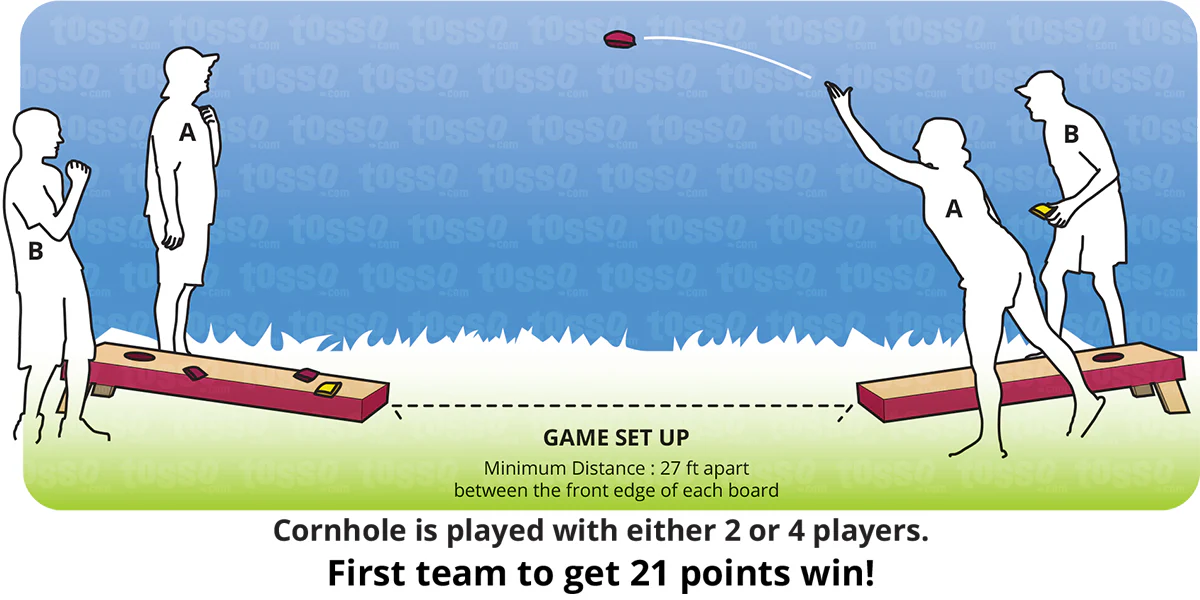Cornhole, a classic American backyard game, has been a staple at gatherings for decades. The thrill of tossing bean bags towards a wooden board with a strategically sized hole draws in players of all ages. But have you ever wondered about the optimal cornhole distance? How far apart should those boards be placed for the ultimate cornhole experience? Let’s dive into the world of cornhole distances and find out how to maximize the fun factor of this beloved game.
Understanding the Basics of Cornhole
Before we delve into the specifics of cornhole distances, let’s brush up on the basics of the game. Cornhole involves tossing bean bags, traditionally filled with corn kernels, towards a raised platform with a hole in it. Players take turns throwing their bags, aiming to land them on the board or, ideally, through the hole. Points are awarded based on where the bags land, with various scoring rules depending on the game variant being played.
The Importance of Cornhole Distance
Cornhole distance plays a crucial role in the game’s dynamics. The distance between the two cornhole boards directly impacts the level of challenge, player strategy, and overall enjoyment. Setting the boards at the right distance ensures a fair and engaging game for everyone involved.
Regulation Cornhole Distance
In official cornhole tournaments and competitions, there are established regulations regarding the distance between the boards. According to the American Cornhole Association (ACA), the standard cornhole distance is 27 feet from front edge to front edge. This regulation distance is commonly used in organized events to maintain consistency and fairness across games.
Factors Influencing Cornhole Distance
While the regulation distance provides a standard for competitive play, there are several factors to consider when determining the ideal cornhole distance for casual games.
Space Availability
One of the primary considerations when setting up a cornhole game is the available space. In smaller yards or indoor settings, adhering strictly to the regulation distance may not be feasible. In such cases, players can adjust the distance to suit the available space while still maintaining a reasonable challenge.
Skill Level of Players
The skill level of the players participating in the game can also influence the optimal cornhole distance. For beginners or younger players, a shorter distance may be more appropriate to make the game more accessible and enjoyable. Conversely, experienced players may prefer a greater challenge and opt for the standard regulation distance.
Game Variants
Cornhole enthusiasts often enjoy experimenting with different game variants, each with its own set of rules and cornhole distances. Variants like “long board” or “short board” cornhole involve adjusting the distance between the boards to add variety and excitement to the gameplay. These variants can be a fun way to spice up traditional cornhole matches and cater to different skill levels.
Tips for Finding the Perfect Cornhole Distance
Finding the perfect cornhole distance for your game requires a bit of trial and error. Here are some tips to help you fine-tune the distance and optimize your cornhole experience:
Tip 1: Start with the Regulation Distance
If you’re unsure where to begin, start by setting up the boards at the standard regulation distance of 27 feet. This distance provides a balanced challenge for most players and serves as a good baseline for adjusting based on individual preferences and skill levels.
Tip 2: Consider the Age and Skill Level of Players
Take the age and skill level of the players into account when determining the cornhole distance. For younger players or beginners, a shorter distance may be more suitable to help them develop their throwing technique and build confidence. On the other hand, seasoned players may prefer a longer distance to test their accuracy and skill.
Tip 3: Adapt to the Playing Environment
Be flexible and adapt the cornhole distance to suit the playing environment. If you’re playing in a small backyard or indoor space, you may need to shorten the distance to accommodate the available area. Conversely, if you have plenty of space to work with, consider extending the distance for an added challenge.
Tip 4: Experiment with Variants
Don’t be afraid to experiment with different game variants and cornhole distances to keep things interesting. Try playing with longer or shorter distances, or explore alternative scoring methods to shake up the gameplay. Variety is the spice of life, and mixing things up can breathe new life into your cornhole matches.
Conclusion
In the world of cornhole, getting the distance just right can make all the difference between a mediocre game and an unforgettable experience. Whether you’re playing competitively or just for fun, finding the perfect cornhole distance is essential for ensuring a fair, challenging, and enjoyable game for everyone involved. So grab your bean bags, set up those boards, and get ready to unleash the fun of cornhole!
cornhole distanceshttps://modulepaper.co.uk/unleashing-the-fun-exploring-the-perfect-cornhole-distance/



